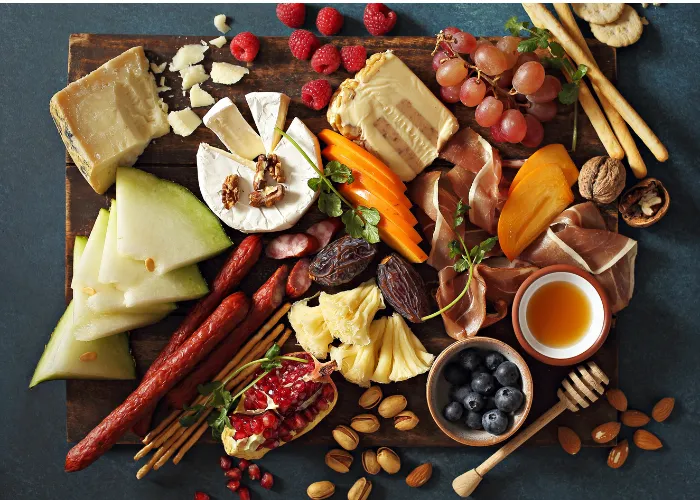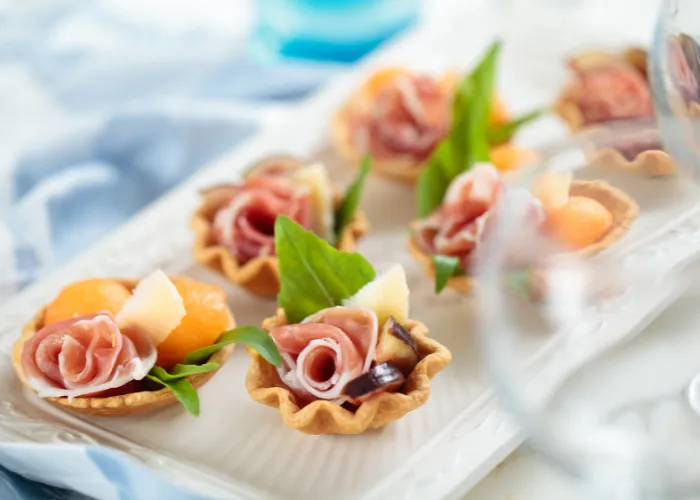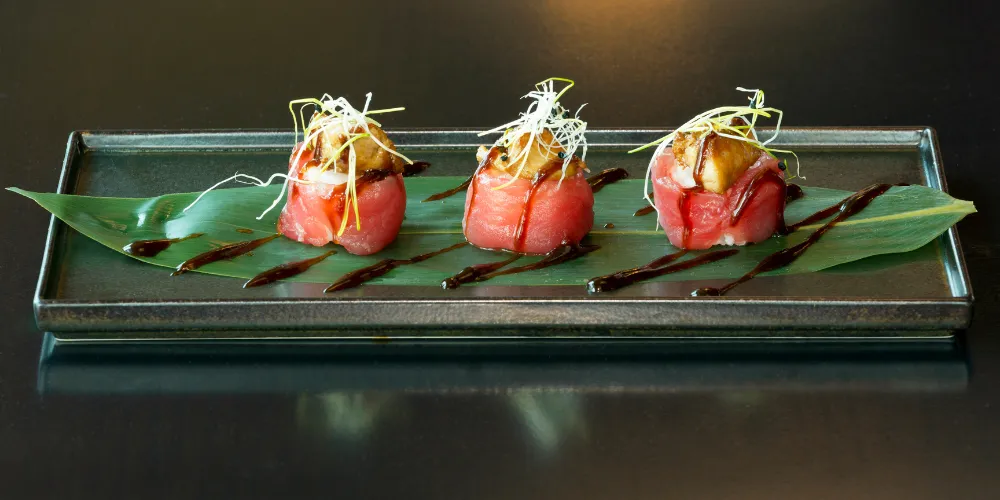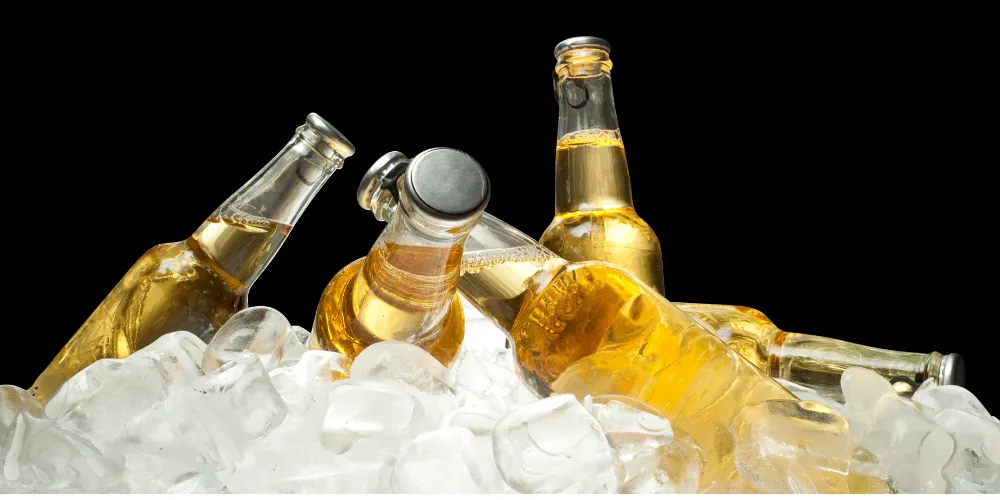If you’ve ever been to a fine dining restaurant, you might have encountered the terms “appetizers” and “starters” used interchangeably. While these terms might seem interchangeable, there are some subtle differences between the two.
Appetizers are typically served in American English, while starters are used more commonly in British English. Both are designed to stimulate the appetite, but starters tend to be smaller portions. Ultimately, the differences between the two are mostly in terminology.
In this article, we’ll look at the differences between appetizers and starters and help you understand how to use them appropriately.
What Are Appetizers?

Appetizers are a type of dish that is served before the main course in a multi-course meal. They are designed to stimulate the appetite and prepare diners for the main course. Appetizers can come in many forms, from small bites of food to more substantial dishes. Some popular appetizers include soups, salads, and finger foods like chicken wings or sliders.
One of the key features of an appetizer is that it should be light and easy to eat. It should be small enough to be consumed in just a few bites and flavorful enough to whet the appetite. Chefs often coordinate the appetizers’ flavors with the main course’s flavors to create a cohesive dining experience.
Examples of Appetizers
Appetizers can include a variety of dishes, such as:
- Bruschetta – toasted bread topped with tomatoes, garlic, olive oil, and basil
- Deviled eggs – boiled eggs with a filling made from yolks, mayonnaise, and mustard
- Shrimp cocktail – chilled, cooked shrimp served with a tangy cocktail sauce
- Spinach and artichoke dip – a creamy dip made with spinach, artichokes, and cheese, often served with bread or chips
- Chicken wings – fried or baked chicken wings coated in various sauces, such as Buffalo or barbecue
What Are Starters?

Starters, on the other hand, are a term used more commonly in British English to describe the same type of dish that Americans refer to as appetizers. They are also served before the main course and are designed to stimulate the appetite. Starters can include soups, salads, and other small bites of food.
Like appetizers, starters should be light and easy to eat. They should be designed to prepare the diner for the main course without overwhelming them. Chefs also coordinate the starters’ flavors with the main course’s flavors.
Examples of Starters
Some popular examples of starters include:
- Soup – a hot or cold liquid dish, such as tomato soup or gazpacho
- Salad – a cold dish made with a mixture of vegetables, fruits, and/or proteins, such as a Caesar salad or a Greek salad
- Pâté – a smooth, spreadable paste made from ground meat or fish, often served with crackers or toast
- Smoked salmon – thinly sliced, cured salmon often served with capers, onions, and cream cheese
- Goat cheese and beet salad – a salad made with roasted beets, goat cheese, and greens, often dressed with a vinaigrette
Appetizers vs. Starters Differences

The main difference between appetizers and starters is the terminology. The first course of a multi-course meal in American English is typically called an appetizer; in British English, it is called a starter. However, beyond this, there are no significant differences between the two.
Appetizers vs. Starters Similarities

While there are subtle differences between appetizers and starters, there are also many similarities. For example, both dishes are served before the main course and designed to stimulate the appetite. They can be served hot or cold and should be light and easy to eat.
In addition, appetizers and starters come in many different forms, from small bites of food to more substantial dishes. They can be made with various ingredients, including meats, vegetables, and seafood. Both dish types are often paired with wine or other beverages to enhance the dining experience.
Appetizers vs. Starters Summary
| Category | Appetizers | Starters |
|---|---|---|
| Definition | Small portions of food served before the main course are typically intended to stimulate the appetite. They can be either hot or cold and are often finger foods. | The meal’s first course is generally larger than an appetizer and designed to set the tone for the rest. Starters can be hot or cold and are usually served individually. |
| Purpose | It is meant to whet the appetite and offer a light snack before the main course. Ideal if you want to provide guests with something to nibble on while they wait for the main event. | Set the stage for the entire meal and can be used to showcase a particular theme or cuisine. It is more appropriate for dinner parties as it helps create a more cohesive dining experience. |
| Portion Size | Generally smaller, as they are designed to be just a taste of what’s to come. | Usually larger, as they are meant to be a more substantial part of the meal. |
| Occasion | Great for cocktail parties, networking events, or gatherings where guests are mingling and not seated for a formal meal. | More suitable for sit-down dinners, where guests will be served a multi-course meal. |
| Variety | Often more diverse, as they can include a wide range of flavors, textures, and ingredients. This allows guests to sample different options. | Generally have a more limited selection, often focused on one or two dishes that complement the main course. |
Why Appetizers Tend to be More Popular than Starters

There are a few reasons why appetizers tend to be more popular than starters:
- Variety: Appetizers typically offer a wider variety of options than starters. While starters are often limited to one or two choices, appetizers can range from simple snacks like chips and dip to more elaborate dishes like stuffed mushrooms or shrimp cocktails.
- Socializing: Appetizers are often served in a shared format, such as a platter or a bowl, making them ideal for socializing and sharing. Starters are usually served on individual plates, which can be less conducive to socializing.
- Time and Cost: Appetizers are quicker and less expensive to prepare than starters. This makes them a popular choice for busy restaurants or hosts who want to offer their guests something to nibble on before the main course without spending too much time or money.
Appetizers are more popular because they offer more variety, are more conducive to socializing, and are often quicker and less expensive to prepare than starters.
Appetizers or Starters: Which Term Should You Use?

Whether you use the term “appetizer” or “starter” depends on your context and region.
In American English, “appetizer” is the more commonly used term to describe the first course of a meal, while in British English, “starter” is more commonly used. However, in some contexts, the terms are used interchangeably.
If you are in a restaurant, it is best to use the term that is used on the menu. If the menu uses “appetizers,” you should use that term when ordering. Similarly, if the menu uses “starters,” you should use that term.
If you are hosting a meal or attending a potluck, it is a good idea to clarify with your guests which term they prefer or use both to avoid confusion.
Ultimately, the choice between using “appetizer” or “starter” depends on the context and the region you are in, but as long as you communicate clearly, either term should be appropriate.
Final Thoughts

The difference between appetizers and starters is primarily a matter of terminology.
Both dishes are served before the main course in a multi-course meal and are designed to stimulate the appetite.
They should be light and easy to eat, and chefs often coordinate their flavors with the flavors of the main course to create a cohesive dining experience.
By understanding the differences between appetizers and starters, you can be better prepared to order and enjoy these dishes the next time you visit a fine-dining restaurant.
So go ahead and try some of the many delicious appetizers and starters available, and enjoy the culinary delights of the dining experience!
[FAQs]
What dish comes before the starter?
Before a starter, an amuse-bouche is often served. The chef offers a small, complimentary dish to excite the palate before the meal begins.
What is an appetizer vs. entree vs. starter?
Appetizers and starters are pre-main course dishes to stimulate appetite. Appetizers are common in American English, while starters are in British English. Entrees are the main course of a meal.
What do you call appetizers on a board?
Appetizers on a board are called charcuterie boards, which typically include assorted meats, cheeses, crackers, fruits, and other finger foods, perfect for sharing and socializing.
REFERENCES:
- Hors d’oeuvre. (2023, April 15). In Wikipedia. https://en.wikipedia.org/wiki/Hors_d%27oeuvre
- WordReference. (n.d.). Aperitiv vs appetizer vs starter. https://forum.wordreference.com/threads/aperitiv-vs-appetizer-vs-starter.324947/
- McCray’s Tavern. (n.d.). Appetizers and small plates: The difference. https://mccraystavern.com/appetizers-and-small-plates-the-difference/


